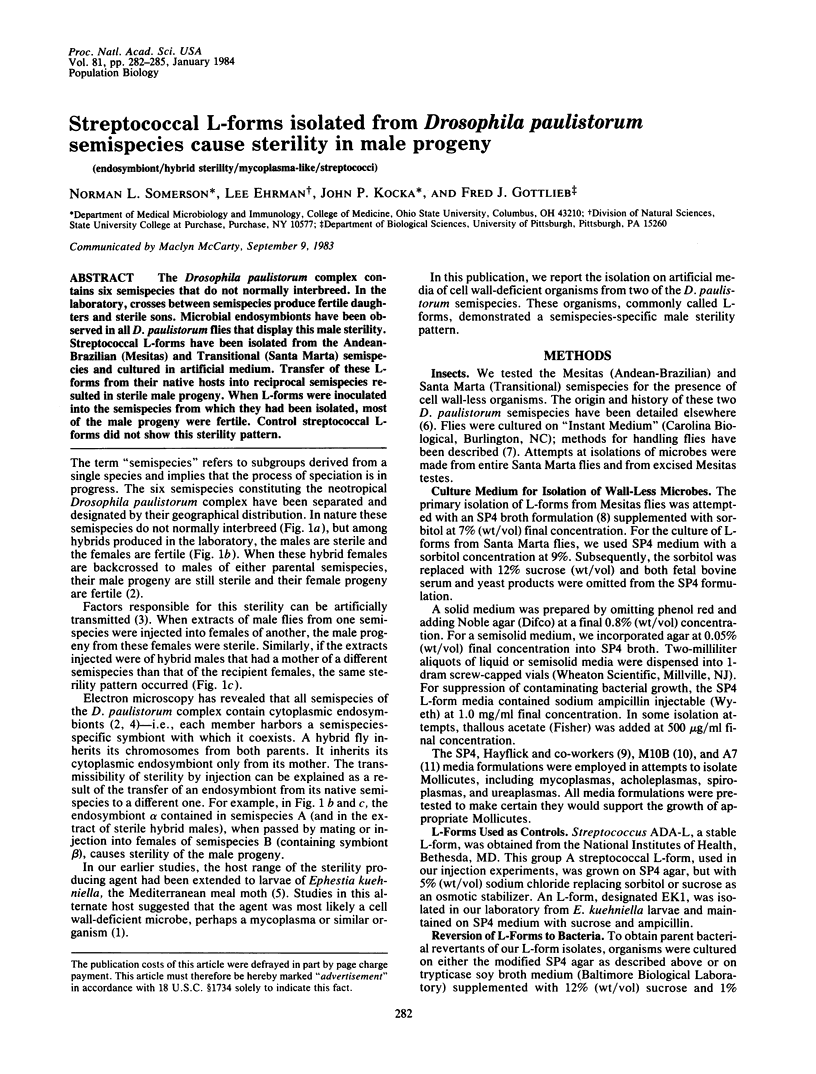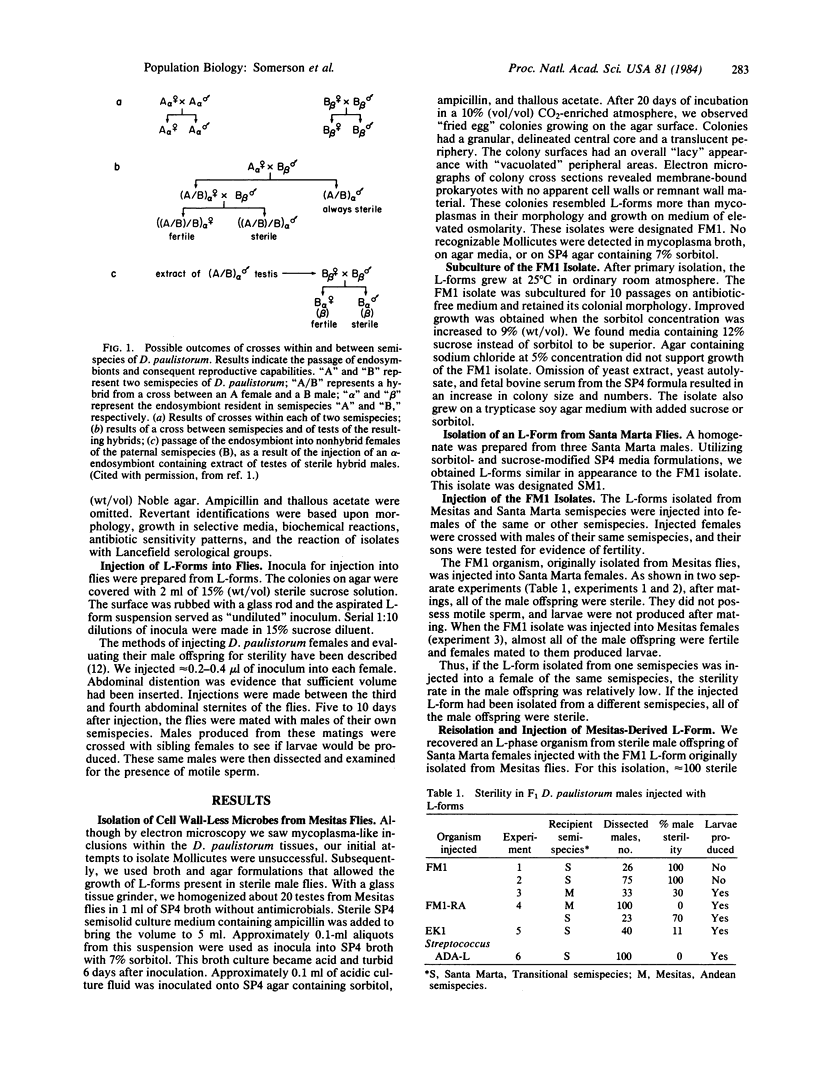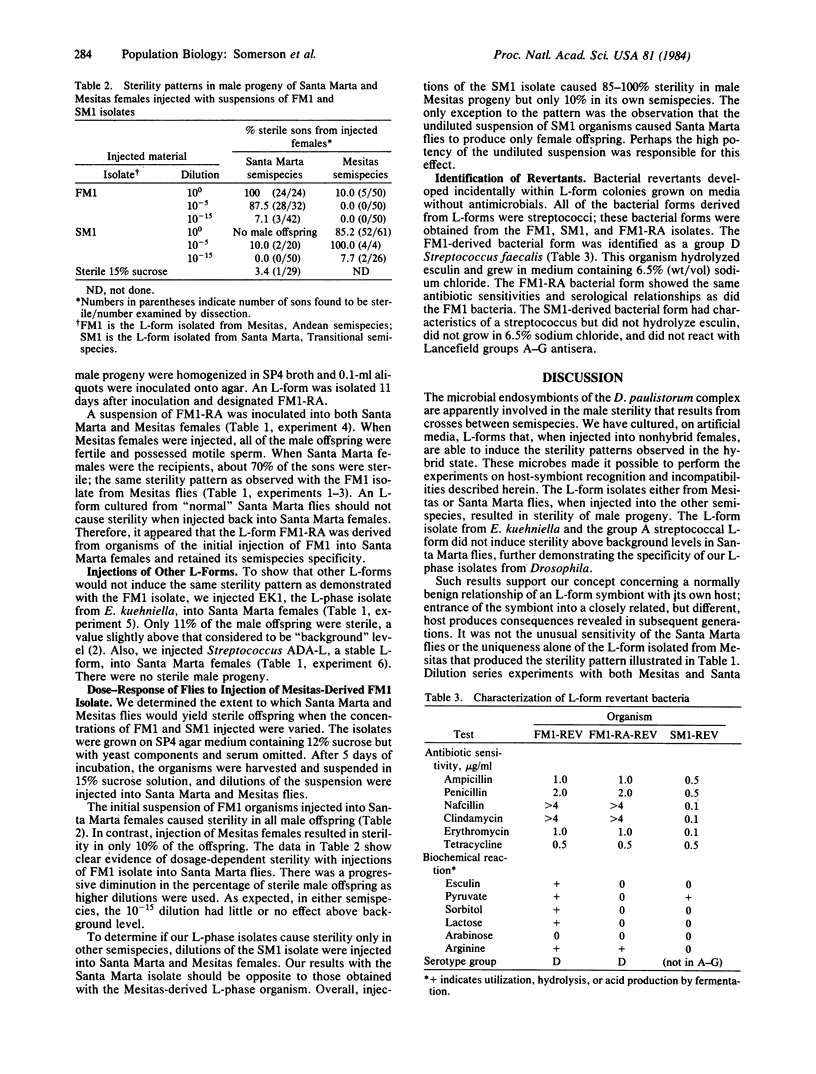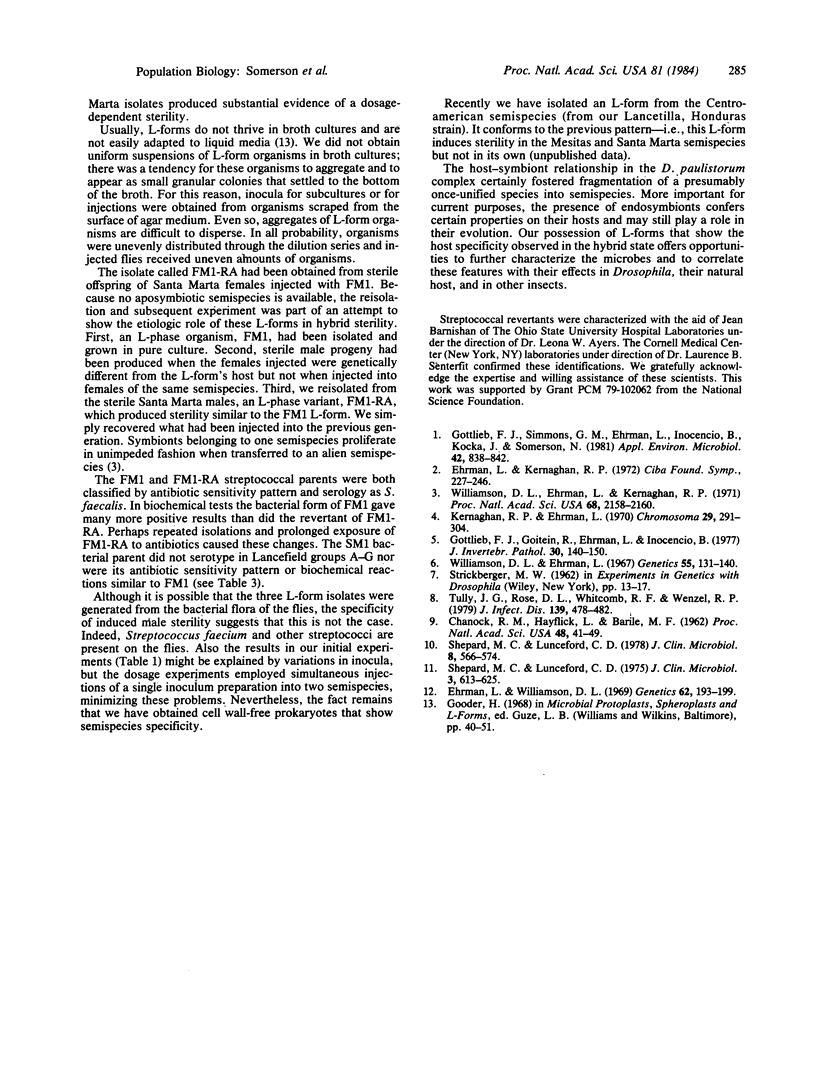Abstract
The Drosophila paulistorum complex contains six semispecies that do not normally interbreed. In the laboratory, crosses between semispecies produce fertile daughters and sterile sons. Microbial endosymbionts have been observed in all D. paulistorum flies that display this male sterility. Streptococcal L-forms have been isolated from the Andean-Brazilian (Mesitas) and Transitional (Santa Marta) semispecies and cultured in artificial medium. Transfer of these L-forms from their native hosts into reciprocal semispecies resulted in sterile male progeny. When L-forms were inoculated into the semispecies from which they had been isolated, most of the male progeny were fertile. Control streptococcal L-forms did not show this sterility pattern.
Full text
PDF



Selected References
These references are in PubMed. This may not be the complete list of references from this article.
- CHANOCK R. M., HAYFLICK L., BARILE M. F. Growth on artificial medium of an agent associated with atypical pneumonia and its identification as a PPLO. Proc Natl Acad Sci U S A. 1962 Jan 15;48:41–49. doi: 10.1073/pnas.48.1.41. [DOI] [PMC free article] [PubMed] [Google Scholar]
- Ehrman L., Williamson D. L. On the etiology of the sterility of hybrids between certain strains of Drosophila paulistorum. Genetics. 1969 May;62(1):193–199. doi: 10.1093/genetics/62.1.193. [DOI] [PMC free article] [PubMed] [Google Scholar]
- Gottlieb F. J., Simmons G. M., Ehrman L., Inocencio B., Kocka J., Somerson N. Characteristics of the Drosophila paulistorum Male Sterility Agent in a Secondary Host, Ephestia kuehniella. Appl Environ Microbiol. 1981 Nov;42(5):838–842. doi: 10.1128/aem.42.5.838-842.1981. [DOI] [PMC free article] [PubMed] [Google Scholar]
- Kernaghan R. P., Ehrman L. An electron microscopic study of the etiology of hybrid sterility in Drosophila paulistorum. I. Mycoplasma-like inclusions in the testes of sterile males. Chromosoma. 1970;29(3):291–304. doi: 10.1007/BF00325944. [DOI] [PubMed] [Google Scholar]
- Shepard M. C., Lunceford C. D. Differential agar medium (A7) for identification of Ureaplasma urealyticum (human T mycoplasmas) in primary cultures of clinical material. J Clin Microbiol. 1976 Jun;3(6):613–625. doi: 10.1128/jcm.3.6.613-625.1976. [DOI] [PMC free article] [PubMed] [Google Scholar]
- Shepard M. C., Lunceford C. D. Serological typing of Ureaplasma urealyticum isolates from urethritis patients by an agar growth inhibition method. J Clin Microbiol. 1978 Nov;8(5):566–574. doi: 10.1128/jcm.8.5.566-574.1978. [DOI] [PMC free article] [PubMed] [Google Scholar]
- Tully J. G., Rose D. L., Whitcomb R. F., Wenzel R. P. Enhanced isolation of Mycoplasma pneumoniae from throat washings with a newly-modified culture medium. J Infect Dis. 1979 Apr;139(4):478–482. doi: 10.1093/infdis/139.4.478. [DOI] [PubMed] [Google Scholar]
- Williamson D. L., Ehrman L. Induction of hybrid sterility in nonhybrid males of Drosophila paulistorum. Genetics. 1967 Jan;55(1):131–140. doi: 10.1093/genetics/55.1.131. [DOI] [PMC free article] [PubMed] [Google Scholar]
- Williamson D. L., Ehrman L., Kernaghan R. P. Induction of sterility in Drosophila paulistorum: effect of cytoplasmic factors. Proc Natl Acad Sci U S A. 1971 Sep;68(9):2158–2160. doi: 10.1073/pnas.68.9.2158. [DOI] [PMC free article] [PubMed] [Google Scholar]


